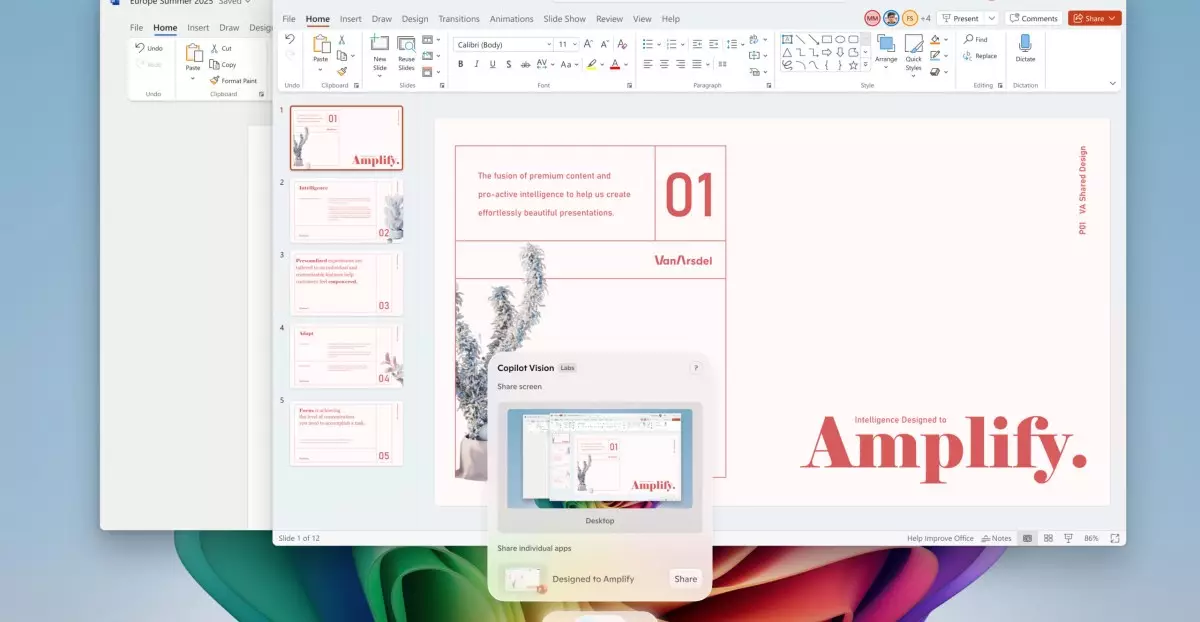Microsoft’s latest venture into AI-driven innovation signifies a dramatic shift in how we interact with personal computers. The introduction of Copilot Vision, an advanced screen-scanning tool, demonstrates a dedication to elevating the Windows 11 experience through intelligent automation and seamless user assistance. Unlike traditional software updates that merely enhance functionality, this new feature represents a paradigm shift where the computer actively interprets and responds to visual content, transforming the passive screen into a dynamic workspace equipped with contextual intelligence.
This technology’s core strength lies in its ability to understand and analyze diverse content across multiple applications simultaneously. Users can ask questions aloud about what’s displayed, whether it’s a complex spreadsheet, a photo, or a webpage, and receive instant, accurate responses. More importantly, it anticipates user needs by providing actionable insights, such as editing suggestions or task guidance, effectively reducing friction and making digital interactions more intuitive. This approach aligns with a broader vision of AI as a personal assistant capable of augmenting human capability rather than replacing it.
However, this leap forward is not without its intricacies. The integration of such a powerful tool raises questions about privacy and data security. While Microsoft emphasizes that these features are designed to assist without invasive data collection, the sheer scope of AI visual analysis demands rigorous safeguards to prevent misuse. As users’ screens become canvases for AI interpretation, trust becomes paramount. This cautious balance between innovation and privacy is pivotal if Microsoft aims for widespread adoption of these revolutionary features.
Exclusivity and Accessibility: A Divide in the Windows Ecosystem
Another critical aspect of this rollout is its tiered nature. While all Windows 11 users will access Copilot Vision through the Copilot app, some features are explicitly reserved for those with Snapdragon-powered Copilot Plus PCs. This delineation underscores Microsoft’s strategic approach to hardware differentiation, incentivizing hardware upgrades under the guise of enhanced AI capabilities.
This exclusivity strategy might accelerate hardware sales, but it also risks fragmenting user experience. Those with standard PCs might feel left behind as they gain access only to a subset of the features designed to optimize productivity. While Microsoft provides some AI-powered tools to all users—like color pickers and bug fixes—they clearly position the more advanced, AI-centric functionalities within the premium ecosystem. This tiered model prompts a fundamental question: Does this division align with the overall goal of democratizing AI, or does it create a digital divide that favors high-end hardware?
Despite these concerns, the strategic push hints at a future where AI enhancements become a standard feature, gradually democratizing over time. Yet, the immediate perception may evoke frustration among budget-conscious users who see limited access to cutting-edge AI tools simply due to their hardware choices.
Reimagining Productivity Through AI-assisted Actions
Microsoft’s expansion of the “Click to Do” feature exemplifies a significant step toward more proactive and contextually aware computing. This feature, which allows users to perform actions by simply holding down the Windows key and clicking on content, is being refined to become a versatile productivity assistant. Now, users can effortlessly schedule meetings, practice language skills, or draft documents—a clear indication that Microsoft envisions a future where tasks are no longer manually executed but intelligently suggested and completed with minimal user input.
What’s notable here is the broad spectrum of new capabilities—ranging from language learning to document drafting—highlighting a vision of AI as a multifaceted helper embedded deeply into our digital routines. Such functionalities could dramatically reduce the time spent on repetitive tasks and free users to focus on creative or strategic work. Yet, the success of these features hinges on their ease of use and reliability; if AI suggestions are inaccurate or intrusive, they risk becoming more of a distraction than a boon.
Microsoft’s emphasis on integrating AI into core applications like Paint, Photos, and Snipping Tool also demonstrates a conscious effort to embed intelligence directly into user tools, transforming mundane features into powerful, creative outlets. The addition of a “perfect screenshot” AI tool exemplifies this push for accuracy and efficiency. If leveraged correctly, these innovations could set a new industry standard for productivity, but if mishandled, they might also contribute to user fatigue or skepticism about AI’s true value.
Impact on the Future of Windows and Digital Workplaces
Microsoft’s aggressive push into AI within Windows 11 signals a boundary-pushing vision for personal computing. By integrating intelligent tools deeply into the OS, Microsoft is positioning Windows as not just an operating system but an intelligent partner in everyday work and leisure. This bold step attempts to bridge the gap between automated assistance and human agency, promising to redefine how we approach tasks and content management.
Yet, critical scrutiny reveals that such a leap also involves risks—chief among them being user dependency on AI and potential erosion of skills for manual task completion. As AI becomes more capable of handling complex actions, there’s a temptation to delegate more to these systems. This raises questions about how much control users should relinquish and whether reliance on AI tools might diminish fundamental cognitive skills.
Furthermore, the rollout’s gradual nature hints at a cautious strategy—Microsoft is testing waters and managing risks while introducing groundbreaking features. As these capabilities become more widespread, they will undoubtedly influence how workplaces leverage Windows technology, potentially fostering more collaborative, AI-augmented environments. However, this transformation demands careful attention to ethical concerns, data privacy, and equitable access to ensure that the future of Windows remains inclusive and trustworthy.
Microsoft’s latest AI initiatives mark a significant evolution in personal computing—one that, if executed with care and responsibility, could dramatically enhance user empowerment and productivity. Yet, critical eyes must also recognize the complexities and responsibilities inherent in deploying such transformative technology at scale.

